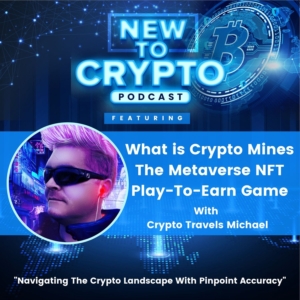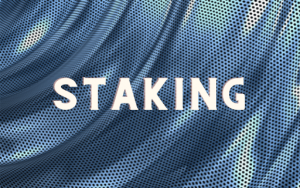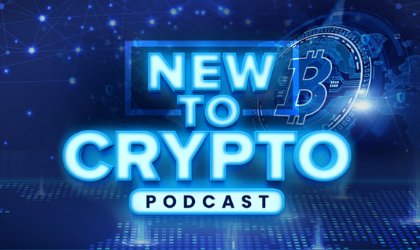Unknown Speaker 0:01
Welcome to the New To Crypto podcast designed to guide you through the crypto landscape with pinpoint accuracy created for the new and intermediate crypto investor. Join your host Crypto Travels Michael as he takes you through the different facets of getting started and succeeding in your crypto journey. New to crypto podcast brings you new episodes daily Monday through Friday with surprise bonus episodes sometimes on the weekend. Let me ask you, are you new to crypto don’t know where to start? Are you more experienced but have questions? Then you’re in the right place. This podcast is designed for you, coming at you from the training center in the lifestyle design studio. Here’s your host Crypto Travels Michael.
Michael 0:52
Today’s show. I’m excited to have you here today is all about Curve Finance and Curve finance is a decentralized exchange or Dex dedicated to offering stable coin exchanges. Simply put it trades like UniSwap does only Curve focuses on assets with one to one parody with fiat currencies. So the features have made Curve a favorite among traders and stable coin liquidity providers looking for minimal slippage to minimize their losses. So just a little background on what slippage is when we talk about slippage we refer to the difference between the expected price of a trade and the price at which the trade is executed. This is a reoccurring source of losses on a lot of trades for traders like other decks protocols within Ethereum, Curve finance bases its operation on an automated market maker system. It differs from projects like UniSwap or SushiSwap by basing its trades on a weighted system of curves prices and dynamic slippage. This is to offer the best price the lowest losses and the lowest possible exchange rates.
So let’s unpack some of the benefits. One of the main advantage of Curve is that its coin exchange mechanism is extremely simple. Its smart contract is far from being very complex, and its main advantage is that its maintenance and security improvement is very high. In fact, it has a very active security research team Curve offers a simple interface and some of the most secure smart contracts in the entire DeFi ecosystem. This together with a wide support of stable coins and among them, some of them are DAI, USDT (tether) TUSD, BUSD, USDC, Packs SUSD as well as BTC pairs. So they basically allow trading with all of them quickly in a noncustodial process in a decentralized way. So let’s break down what Curve pools are stable liquidity pools right Curve’s liquidity pools are similar to the UniSwap ones. In fact, Curve is known as the Uniswap of stable coins in some circles. Remember that a liquidity pool is simply a space controlled by a smart contract where large amounts of an asset are a masked and injected or invested by liquidity providers also known as LPs, these users inject liquidity in order to earn profits from the loans or swaps that will be made using these assets.
Thus, each loan or trade made carries a small fee or interest if you will, which when added together ends up feeding the profits of liquidity providers, liquidity providers can inject their IADS or USDT’s into Curve’s pools which this protocol will use to offer trades in exchange for a small fee that will ultimately feed the liquidity providers profits. The exchange ratio within these pools is handled by smart contracts. This is what allows the system to be classified as an AMM. On an AMM exchange such as UniSwap you can earn fees whenever a trade is made, on Curve trading fees are lower than they are on UniSwap, But you can also earn rewards from outside of Curve with interoperable tokens. Curve integrates with other platforms providing another means of secondary exchange in order to earn higher profits. This is why we see liquidity pools in projects such as urine finance, UniSwap and compound each designed to take advantage of the liquidity contained in Curve by using those assets and other protocols Curve and its pools are intended not only to serve as an exchange, but also to provide liquidity to other protocols. So let’s go over the low fees for a moment.
So another point is that it tends to offer exchanges for significantly lower commissions than others. other platforms for example, during the last Ethereum gas price spike a trade on Curve average $33 while on UniSwap, it was well over $55 It was between 55 to $80. So trading tokens on Curve is fairly low risk trades consist of a single transaction with a minimal attack surface. Additionally, risks of impermanent losses are rare to see within Curve. This is thanks to the fact that this protocol makes use of stable coin. So what is the origin of Curve? Curve finance is relatively recent project and the DeFi world in fact, its whitepaper was presented on November 10 2019 by Michael Egorov.
The platform originally named StableSwap was intended to provide DeFi services for stable coins within an AMM, so Michael Egorova is known to be the founder and CEO of Curve, he was also the co founder and CTO of NewCypher and encryption company. And the token is CRV so, the CRV token is an ERC 20 governance token designed to incentivize liquidity providers on the platform as well as to get as many users as possible involved in the governance of the protocol. Currently, the CRV token has three main uses: voting, staking, and momentum these three things require voting within the Curve’s DAO if any user wishes to vote that they must lock their CRV tokens and acquire veCRV token, veCRV stands for escrowed voting CRV. It is simply CRV tokens locked for a period of time and the longer you lock your CRV tokens, the more veCRV you will receive the CRV token can be bought as well as earned through yield farming when you deposit it assets into liquidity pools and earn tokens as a reward like all ERC 20 tokens, it can be stored in any wallet that is capable of supporting this standard so users can store it securely at all time.
I hope that today’s episode about Curve Finance has been informative to you and has helped paint a better picture for you as to what Curve is definitely like and subscribe the podcast and I thank you for chiming in here and I’ll definitely meet you here tomorrow for another new episode. If you would like to reach out to me, you can email me at show@newtocrypto.io Until tomorrow, make it a great day.
Unknown Speaker 7:36
Thanks for tuning in to New To Crypto podcast. If you liked the episode, be sure to follow and subscribe. You can listen to every episode on all major platforms. Have an interest in being on the show or want advertising reach out at newtocrypto.io. Head over to our site newtocrypto.io to access the resources mentioned in each episode. Until next time, remember to navigate the crypto landscape with pinpoint accuracy.
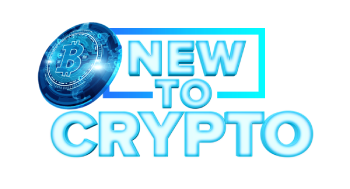
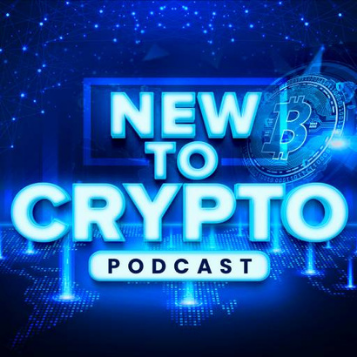






![Understand How Curve Finance Uses Stablecoins To Power Its DEX [Explained]](https://newtocrypto.io/wp-content/uploads/2021/11/Understand-How-Curve-Finance-Uses-Stablecoins-To-Power-Its-DEX-Explained-330x310.jpg)

